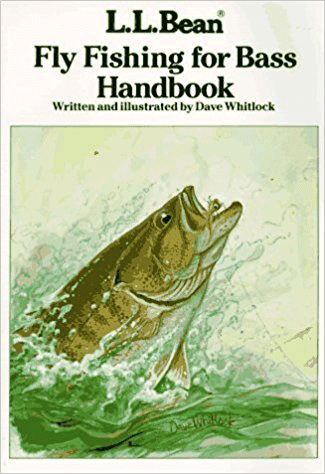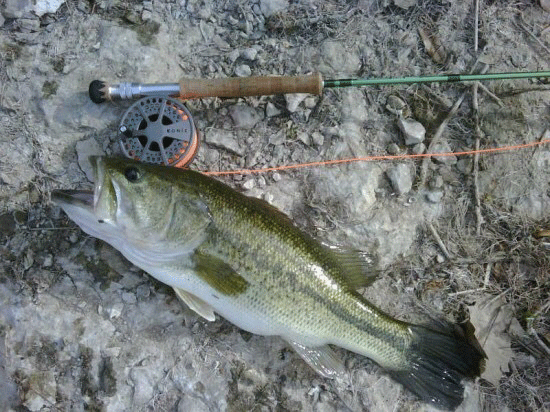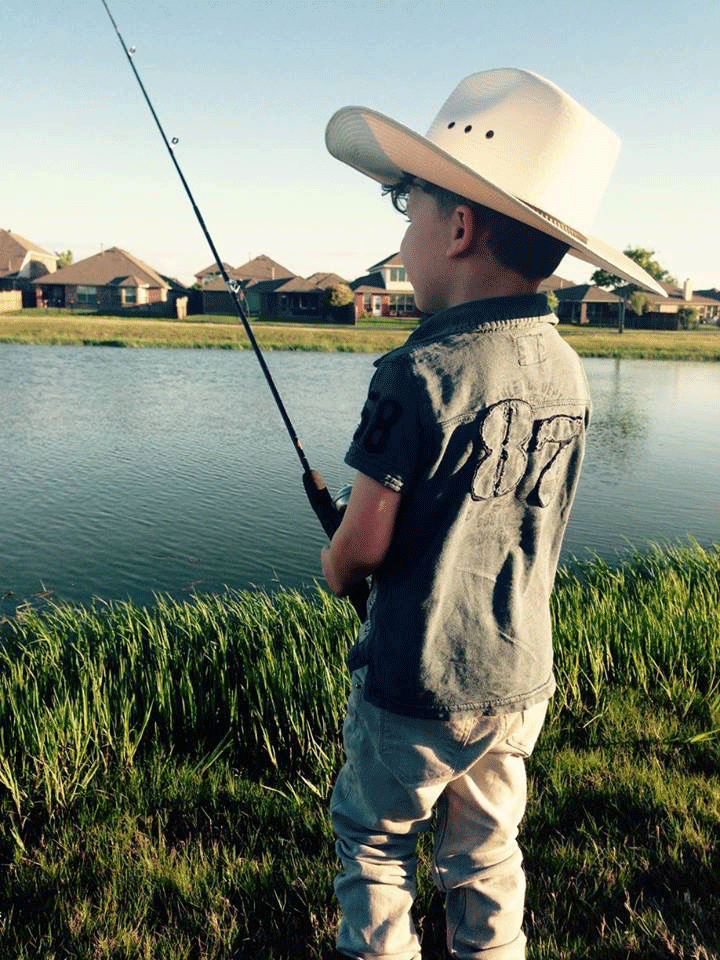
Before church Sunday morning, I was visiting with a good friend when she mentioned an upcoming trip to the Beavers Bend area. Fishing is in the air! She and her family will be trying their fly fishing skills on the resident trout population-that sounds like fun to me! Regardless of the type of fish you pursue, now is the time to kick it into high gear. With temps this week in the mid 80s, the big bass will be cruising the shallows of your favorite waters. Just remember that those temps will also cause our local snake population to be moving around, also looking for a springtime snack! If you haven’t tried fly fishing, you are really missing out! It’s a sport that offers a journey for a lifetime. It can be as consuming as you wish it to be, but one thing is sure, you will always be learning something new. Add the element of tying your own flys/lures and you have a hobby for life! I’ve probably spent just as much time fly fishing on bass ponds in my life than I’ve spent traveling around chasing trout. Fishing farm ponds is where I originally found my love for fly fishing. Dave Whitlock is a well known fly fisherman and craftsman. He creates some of the most beautiful and effective flies for bass I have ever seen. He really opened the door to fly fishing for bass back in the 70s and 80s with his books on the subject.

My first outfit was crude at best with a $10 reel and a 9 foot fiberglass rod, that seemed to be as heavy as a shotgun. Heavy and cumbersome but it worked! With no fly fishing stores around, everything was mail order, but every time a package showed up it was like Christmas. Prior to that time my exposure to fly fishing was limited to articles in “Field & Stream”, “Outdoor Life” and other outdoor publications. I spent hours at the pond below our house, in the Valley Pasture, trying to fool the local bass and crappie populations. I wasn’t always successful but I was learning a sport that I have loved for nearly 50 years! Fly fishing for bass on ponds is a great way to get into the sport. There’s usually plenty of fish, and you always stand a good chance at catching them. One of the greatest things about ponds, in my opinion, is that most of them are small enough to fish their entirety from the bank. And the smaller the piece of water you’re fishing, the easier it is to locate fish. If you don’t agree, go out to a big public lake, and you’ll quickly understand what a bonus this is for an angler. The many hours I spent fly fishing bass ponds in my younger days, I learned a great deal. Below is a list of tips that I’d like to pass on in the hopes it will help others find success. It didn’t take me long fishing ponds to figure out the best method for consistently catching fish was casting my flies parallel to the banks of ponds. The reason it’s so effective is because it allows you to cover water systematically and thoroughly. When you cast parallel to the bank you can work your fly along the natural contours of the pond. Keeping your flies in similar water throughout your retrieve. Instead of spending your time casting out into deep water and working your flies back to you, start out casting your flies just off the bank, then slowly working your parallel casts outward into deeper water. Doing so, you’ll be able to locate where the majority of the fish are located and feeding, eliminate unproductive water and concentrate your efforts and first casts in the hot zones. Early spring, when the shallow waters warm quickly, this will work wonders!

Warm water species of fish are very similar to trout, in the fact that they spend most of their life span staying close to their food sources. The majority of the food found in ponds is located in close proximity to the banks. This is even more true when you’re fly fishing on ponds that lack lots of cover and structure. If you take the time to look along the banks, you’ll find bream and juvenile bass, newly hatched fry, frogs and tadpoles, dragonfly and damselfly nymphs and crayfish. All of these species use the banks, and it’s vegetation in and out of the water for cover and safety. If they venture out into open water, they know they’re sitting ducks for predators. Bass use two methods for foraging on their food sources. They either set up stationary in ambush spots close to cover or structure awaiting prey, or they stay on the move, slowly patrolling the waters where the majority of their food sources are located. The key here, is to have a strategy with your presentations. Don’t randomly cast your flies around the pond. Hopefully I have stirred some interest in fly fishing your local ponds, next week we will continue our look at this exciting sport! Meanwhile get out and enjoy your Oklahoma. Before church Sunday morning, I was visiting with a good friend when she mentioned an upcoming trip to the Beavers Bend area. Fishing is in the air! She and her family will be trying their fly fishing skills on the resident trout population-that sounds like fun to me! Regardless of the type of fish you pursue, now is the time to kick it into high gear. With temps this week in the mid 80s, the big bass will be cruising the shallows of your favorite waters. Just remember that those temps will also cause our local snake population to be moving around, also looking for a springtime snack! If you haven’t tried fly fishing, you are really missing out! It’s a sport that offers a journey for a lifetime. It can be as consuming as you wish it to be, but one thing is sure, you will always be learning something new. Add the element of tying your own flys/lures and you have a hobby for life! I’ve probably spent just as much time fly fishing on bass ponds in my life than I’ve spent traveling around chasing trout. Fishing farm ponds is where I originally found my love for fly fishing. Dave Whitlock is a well known fly fisherman and craftsman. He creates some of the most beautiful and effective flies for bass I have ever seen. He really opened the door to fly fishing for bass back in the 70s and 80s with his books on the subject. My first outfit was crude at best with a $10 reel and a 9 foot fiberglass rod, that seemed to be as heavy as a shotgun. Heavy and cumbersome but it worked! With no fly fishing stores around, everything was mail order, but every time a package showed up it was like Christmas. Prior to that time my exposure to fly fishing was limited to articles in “Field & Stream”, “Outdoor Life” and other outdoor publications. I spent hours at the pond below our house, in the Valley Pasture, trying to fool the local bass and crappie populations. I wasn’t always successful but I was learning a sport that I have loved for nearly 50 years! Fly fishing for bass on ponds is a great way to get into the sport. There’s usually plenty of fish, and you always stand a good chance at catching them. One of the greatest things about ponds, in my opinion, is that most of them are small enough to fish their entirety from the bank.

And the smaller the piece of water you’re fishing, the easier it is to locate fish. If you don’t agree, go out to a big public lake, and you’ll quickly understand what a bonus this is for an angler. The many hours I spent fly fishing bass ponds in my younger days, I learned a great deal. Below is a list of tips that I’d like to pass on in the hopes it will help others find success. It didn’t take me long fishing ponds to figure out the best method for consistently catching fish was casting my flies parallel to the banks of ponds. The reason it’s so effective is because it allows you to cover water systematically and thoroughly. When you cast parallel to the bank you can work your fly along the natural contours of the pond. Keeping your flies in similar water throughout your retrieve. Instead of spending your time casting out into deep water and working your flies back to you, start out casting your flies just off the bank, then slowly working your parallel casts outward into deeper water. Doing so, you’ll be able to locate where the majority of the fish are located and feeding, eliminate unproductive water and concentrate your efforts and first casts in the hot zones. Early spring, when the shallow waters warm quickly, this will work wonders! Warm water species of fish are very similar to trout, in the fact that they spend most of their life span staying close to their food sources. The majority of the food found in ponds is located in close proximity to the banks. This is even more true when you’re fly fishing on ponds that lack lots of cover and structure. If you take the time to look along the banks, you’ll find bream and juvenile bass, newly hatched fry, frogs and tadpoles, dragonfly and damselfly nymphs and crayfish. All of these species use the banks, and it’s vegetation in and out of the water for cover and safety. If they venture out into open water, they know they’re sitting ducks for predators. Bass use two methods for foraging on their food sources. They either set up stationary in ambush spots close to cover or structure awaiting prey, or they stay on the move, slowly patrolling the waters where the majority of their food sources are located. The key here, is to have a strategy with your presentations. Don’t randomly cast your flies around the pond. Hopefully I have stirred some interest in fly fishing your local ponds, next week we will continue our look at this exciting sport! Meanwhile get out and enjoy your Oklahoma.